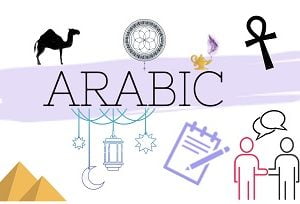Science for Year 7
School Education divided into 13 grade levels. Each grade level has certain standards for different skills. Teacher’s job is to detect students’ real year level and her/his needs to continue her/his academic development.
A comprehensive set of progressive learning objectives for science year 7. The objectives detail what the learner should know or what they should be able to do in science in year 7 of primary education.
E Scientific enquiry
Ep Ideas and evidence
• 7Ep1 Be able to talk about the importance of questions, evidence and explanations.
• 7Ep2 Make predictions and review them against evidence.
Ep Plan investigative work
• 7Ep3 Suggest ideas that may be tested.
• 7Ep4 Outline plans to carry out investigations, considering the variables to control, change or observe.
• 7Ep5 Make predictions referring to previous scientific knowledge and understanding.
• 7Ep6 Identify appropriate evidence to collect and suitable methods of collection.
• 7Ep7 Choose appropriate apparatus and use it correctly.
Eo Obtain and present evidence
• 7Eo1 Make careful observations including measurements.
• 7Eo2 Present results in the form of tables, bar charts and line graphs.
• 7Eo3 Use information from secondary sources.
Ec Consider evidence and approach
• 7Ec1 Make conclusions from collected data, including those presented in a graph, chart or spreadsheet.
• 7Ec2 Recognise results and observations that do not fit into a pattern, including those presented in a graph, chart or spreadsheet.
• 7Ec3 Consider explanations for predictions using scientific knowledge and understanding and communicate these.
• 7Ec4 Present conclusions using different methods.
B Biology
Bp Plants
• 7Bp1 Recognise the positions, and know the functions of the major organs of flowering plants, e.g. root, stem, leaf.
Bh Humans as organisms
• 7Bh1 Explore the role of the skeleton and joints and the principle of antagonistic muscles.
• 7Bh2 Recognise the positions and know the functions of the major organ systems of the human body. Secondary sources can be used.
• 7Bh3 Research the work of scientists studying the human body.
Bc Cells and organisms
• 7Bc1 Identify the seven characteristics of living things and relate these to a wide range of organisms in the local and wider environment.
• 7Bc2 Know about the role of micro-organisms in the breakdown of organic matter, food production and disease, including the work of Louis Pasteur.
• 7Bc3 Identify the structures present in plant and animal cells as seen with a simple light microscope and/or a computer microscope.
• 7Bc4 Compare the structure of plant and animal cells.
• 7Bc5 Relate the structure of some common cells to their functions. Secondary sources can be used.
• 7Bc6 Understand that cells can be grouped together to form tissues, organs and organisms.
Be Living things in their environment
• 7Be1 Describe how organisms are adapted to their habitat, drawing on locally occurring examples. Secondary sources can be used.
• 7Be2 Draw and model simple food chains.
• 7Be3 Discuss positive and negative influence of humans on the environment, e.g. the effect on food chains, pollution and ozone depletion.
• 7Be4 Discuss a range of energy sources and distinguish between renewable and non-renewable resources. Secondary sources can be used.
Bv Variation and classification
• 7Bv1 Understand what is meant by a species.
• 7Bv2 Investigate variation within a species. Secondary sources can be used.
• 7Bv3 Classify animals and plants into major groups, using some locally occurring examples.
C Chemistry
Cs States of matter
• 7Cs1 Show in outline how the particle theory of matter can be used to explain the properties of solids, liquids and gases, including changes of state.
Cp Material properties
• 7Cp1 Distinguish between metals and non-metals.
• 7Cp2 Describe everyday materials and their physical properties.
Cc Material changes
• 7Cc1 Use a pH scale.
• 7Cc2 Understand neutralisation and some of its applications.
• 7Cc3 Use indicators to distinguish acid and alkaline solutions.
Ce The Earth
• 7Ce1 Observe and classify different types of rocks and soils.
• 7Ce2 Research simple models of the internal structure of the Earth.
• 7Ce3 Examine fossils and research the fossil record.
• 7Ce4 Discuss the fossil record as a guide to estimating the age of the Earth.
• 7Ce5 Learn about most recent estimates of the age of the Earth.
P Physics
Pf Forces and motion
• 7Pf1 Describe the effects of forces on motion, including friction and air resistance.
• 7Pf2 Describe the effect of gravity on objects. Secondary sources can be used.
Pe Energy
• 7Pe1 Understand that energy cannot be created or destroyed and that energy is always conserved.
• 7Pe2 Recognise different energy types and energy transfers.
Pb The Earth and beyond
• 7Pb1 Describe how the movement of the Earth causes the apparent daily and annual movement of the sun and the stars.
• 7Pb2 Describe the relative position and movement of the planets and the sun in the solar system.
• 7Pb3 Discuss the impact of the ideas and discoveries of Copernicus, Galileo and more recent scientists.
• 7Pb4 Understand that the sun and other stars are sources of light and that planets and other bodies are seen by reflected light.
If you are thinking to take in a small group (2-3 people) OR
Do you have any question? Please





Reviews
There are no reviews yet.